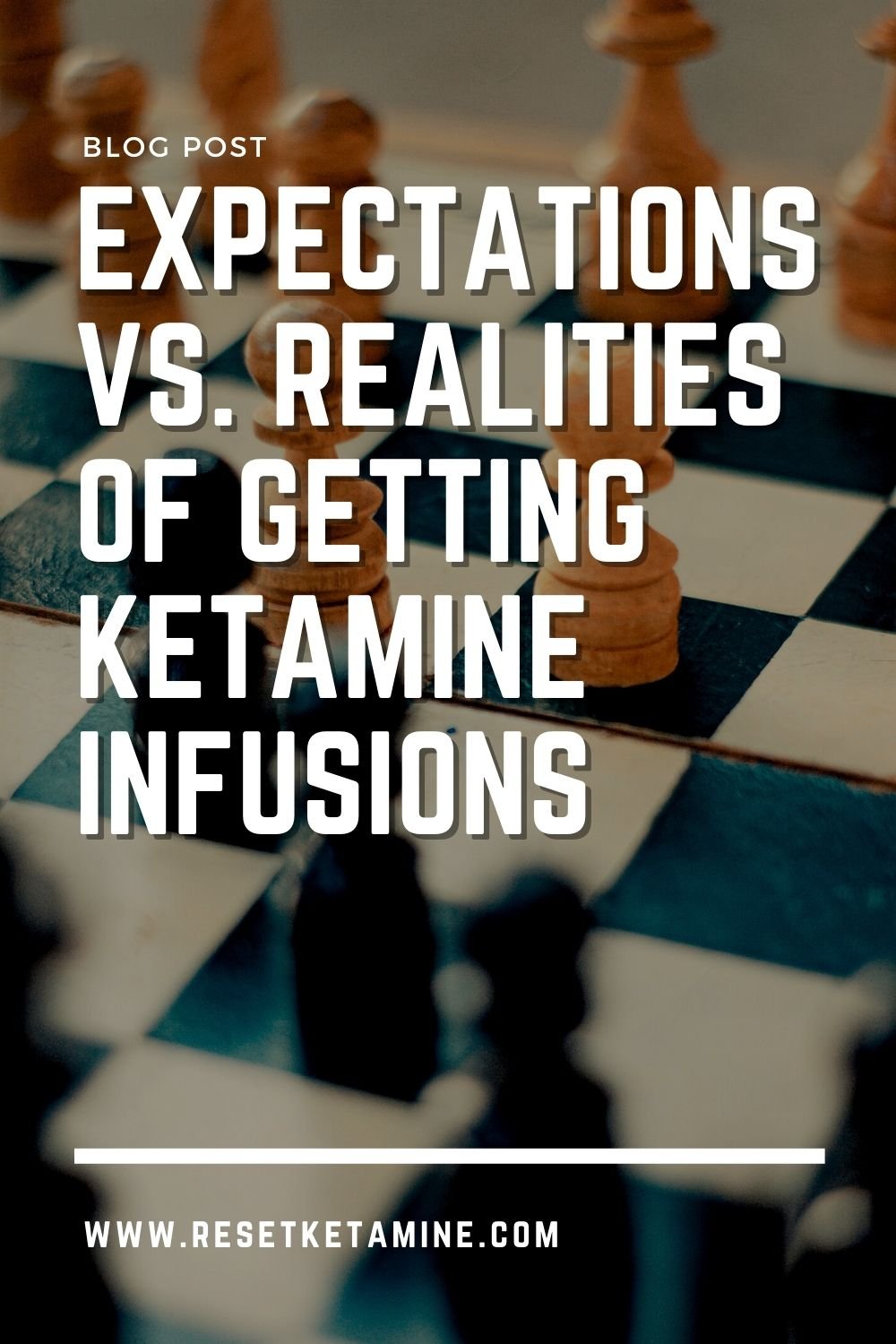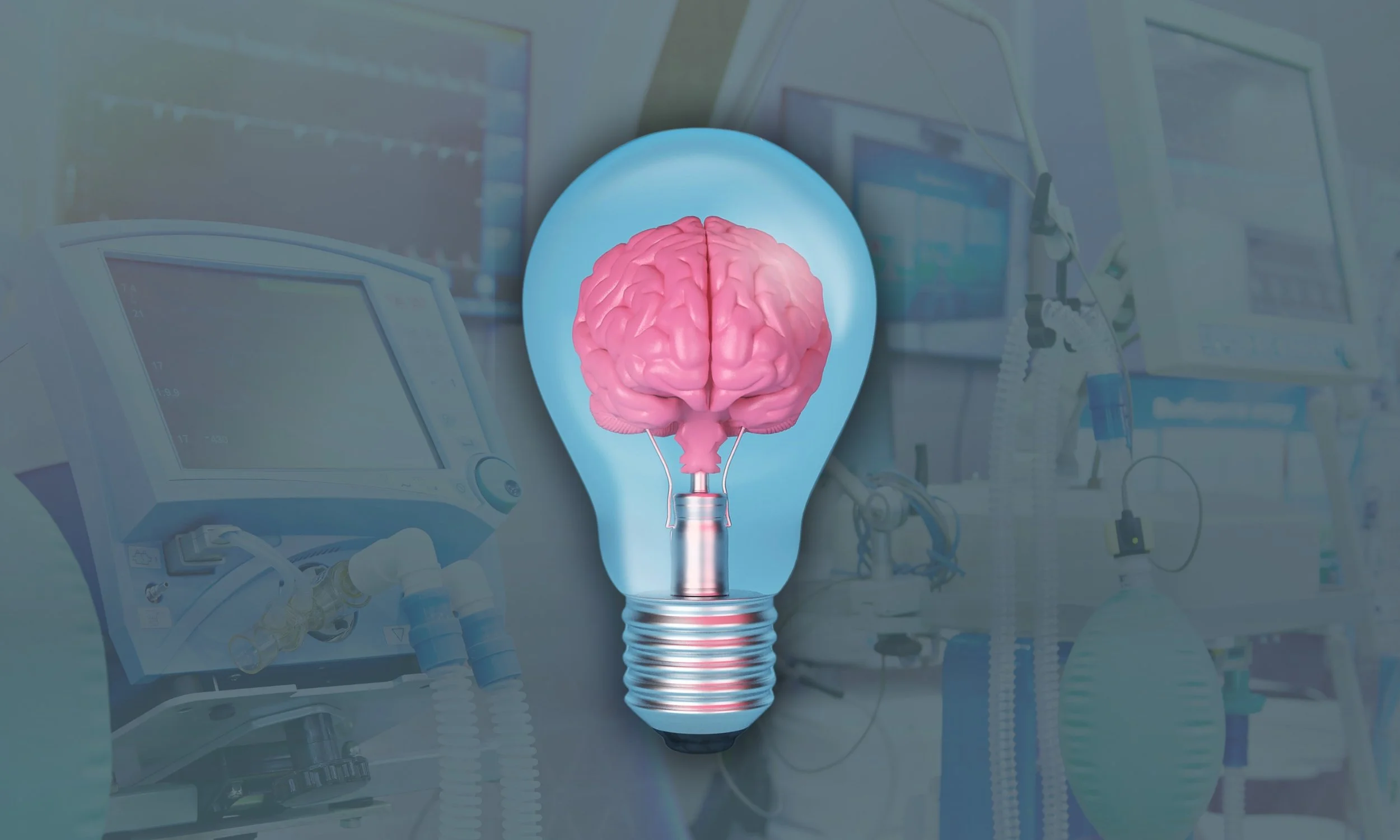We have had the pleasure and honor of treating hundreds of patients with ketamine infusions. And over these years talking with potential patients during consultations plus our patients undergoing infusions, we have gotten to better understand the expectations people bring when starting out in their ketamine journey to healing. Often these expectations are influenced by feelings of desperation or hope, or impressions from the media. So in this blog, we are going to explore some of the common expectations and share the realities.
Many potential ketamine patients have misleading expectations about ketamine infusions, which is why we want to shed some light on the realities.
Expectation: Ketamine infusions will be a miracle cure.
Reality: You may need continued maintenance boosters.
You might have heard of someone having their pain or depression “cured” and that after the initial 6 ketamine infusions, they didn’t need to see their ketamine specialist ever again. While that is possible for some people, you have to take into consideration a couple things. Some of these include the level of their need for the treatments (i.e. how bad their depression was for example) plus you can’t actually predict the future. Meaning they may need further infusions in the future but it is not something that you can always predict in the present. Sure, some may not need any more, but more often than not we have seen especially those with very symptomatic treatment resistant depression, for example, needing maintenance boosters. Another take on this is that pain and mood disorders are considered by some to not be something that can be cured, but rather managed. You may find that instead of being “cured” by the ketamine, you are actually catalyzed to make changes in your everyday life that then results in you not needing further ketamine infusions.
Expectation: Ketamine infusions will fix all your symptoms or problems.
Reality: You need to put in work between treatments.
Ketamine is an amazing medication, but it isn’t the only answer. In reality, it is often just part of the answer for some, as ketamine isn’t for everyone. Often the cause of the chronic pain condition, anxiety, or depression is multifactorial, meaning that what caused it wasn’t just one thing and rather it was many things. Therefore, a one-size-fit-all answer isn’t going to work. When we say you need to “put in the work” between treatments, we are talking about integration and making effective changes in your day-to-day life. Not sure what we mean? Here’s an example. You are getting ketamine infusions to treat your depression and you are getting better with each infusion., Now, what will solidify that improvement or even support and enhance that transformation is making changes in between infusions. During the infusion, you gained the insight that there are individuals who are toxic or unhealthy for you. You make a conscious decision to either no longer have them in your life or to minimize your contact with them. Or perhaps after the infusion experience, you had an insight that you need to go back to seeing a therapist consistently. So you book an appointment with them and decide to be consistent with your therapy sessions to work on talking about your feelings more. See, the medication itself isn’t the only answer, the habits and behaviors in between are the real game changers in the long run.
Explore the topic of integration more at our How to Prepare For And Integrate From a Ketamine Infusion blog.
Expectation: Ketamine infusions can get you off of all your medications.
Reality: You'll likely continue taking meds and or taper off some under the supervision of your doctor.
While it is important to remember that each individual has a unique medical history and responds in their own way to ketamine infusions, there are some who have the potential to no longer need certain medications like SSRIs or benzodiazepines. However, more often than not, what we see is that some patients will need less of a dosage. Others are able to get off some but not all medications related to the disorder they are getting treated with ketamine infusions for. Regardless, any changing or stopping of medications should be done under the supervision of the prescribing or primary doctor and often done slowly, tapering the medication. This expectation, similar to the previous two expectations, is rooted in a false hope that ketamine is the only answer and is a miracle drug. Yes, ketamine can do miraculous things for patients BUT the fantastic transformation comes with a holistic approach to the treatment and individual.
Expectation: Ketamine infusions are a “fun trip” where you see lots of cool visuals like floating through space.
Reality: Infusions experiences can be challenging and even frightening.
Psychedelic ketamine infusion experiences are different from person to person, plus are also never identical for even the same individual. While you may have heard or read about someone’s “fun and exciting” experience, there is no guarantee your experience would be like this. If you are facing a lot of challenges or have experienced lots of trauma in the past, it's very possible that you may get the chance to relieve or revisit past experiences. We are of the belief that you are capable of handling whatever you face or experience during your psychedelic experience, and that what you experience is exactly what you need on your journey of healing. While we don’t want to discourage you or scare you, we also don’t want to mislead you into thinking it's all fun times and unicorns.
Curious about what to do about challenging ketamine infusions experiences? Explore this topic more at our How to Handle Challenging Experiences With Ketamine blog.
Expectation: During your ketamine experience, you’ll get clear insights and direction on what to do.
Reality: Psychedelic ketamine experiences can be confusing and unclear.
Sometimes you might not even remember what happened or what you saw during your ketamine experience. Sure, we have witnessed some of our patients receiving a clear message or direction on what they need to do in their everyday life. But for many, they’ll come out of the experience not clear on what just happened or say they experienced things but were not sure what it meant. These ketamine-induced non-ordinary states of consciousness fall into one of the following four categories:
Empathogenic experience
Out-of-body experience
Near-death experience
Learn more about The Four Types of Experiences You May Have With Ketamine blog.
What we have noticed, that while some may not get clear insights or direction during the infusion afterwards, they have more insight on what to do or what the experience meant in the days following the infusion. Thus the importance of having an integration practice.
Explore the topic of integration more at our How to Prepare For And Integrate From a Ketamine Infusion blog.
Expectation: You’re going to get rapid and immediate results after one infusion.
Reality: You may need up to six infusion treatments to notice impact.
While we have seen some patients do very well and experience dramatic improvement after their first infusion, there were others who needed several infusions and even up to six initiating infusions to really experience significant improvement. The founding studies into ketamine used for mood disorders supported the six infusions over two or three weeks, thus why we recommend the series and don’t guarantee results with only one treatment. Of course, we are always welcome and are grateful when our parents have a significant improvement after their first infusion.
Check out our blog Should I Get One Or Multiple Ketamine infusions,where we dive into this question about the number of infusions even deeper.
Expectation: Ketamine infusions will work 100% of the time.
Reality: Not everyone responds to ketamine and up to 20-40% don’t depending upon the study.
The research is out there to support how effective ketamine is. But it isn’t a wonder drug. Of course there are people who, despite trying ketamine, don’t get better. There is no medication that works 100% of the time for 100% of patients, so sometimes we are confused by this expectation that is brought up by a potential patient. Yet on reflection, we find that this expectation comes from someone who is truly seeking relief and has tried so many other treatments that did not work for them. Another thing to consider is that what started and or contributed to developing a mood or pain disorder are many different factors, such as genetics, environment, etc. Therefore for a result that is even close to 100% requires a holistic approach to treatment.
Expectation: All your friends and family will support you with your decision to undergo ketamine infusion treatments.
Reality: You may face resistance and stigma associated with ketamine and psychedelic therapy.
Your friends and family love you. Yes. They all want you to get better. Yes. They are all onboard with a treatment that happens to be a psychedelic medicine. Uh no…well, it depends. Perhaps all of your loved ones want you to get better, but the reality is that not all will understand and be open to the use of ketamine and psychedelic therapy. Some people see using psychedelics as trading one drug or addiction for another. Others see it as a fad or trend. Even though there is a growing body of research supporting the role of psychedelics in the treatment of pain and mood disorders, it can take time for cultural acceptance (even in the medical community)
If you are someone who has a loved one getting ketamine infusions and want to know how you can support them, check out or blog on this very topic here!
Expectation: All ketamine clinics are the same.
Reality: Every ketamine clinic is unique and does their treatments in their own way.
While many clinics will follow the traditional initial six infusions series followed by boosters, the time of scheduling the infusions, how the infusions are performed and the experience the individual has in the clinic can vary significantly from clinic to clinic. Traditionally there are three different models of ketamine treatments:
Classic medical/surgical - This is a clinical approach with vital signs monitoring, intravenous ketamine, and is practiced by the vast majority of ketamine infusion clinics.
Ketamine-assisted psychotherapy - This approach typically utilizes oral or intramuscular ketamine. There will be a therapist or counselor to talk with as you have your ketamine experience.
Spiritual or shamanic model - Ketamine is used at higher doses with a focus on the experiential and psychedelic nature of ketamine.
Because of this variation in styles and approaches, just like seeking care from any clinic we recommend you do a little research on finding the right clinic for you.
Summary
As you’ve read above, getting a ketamine treatment isn’t a walk in the park. Despite all the research supporting the effectiveness of ketamine in treating mood disorders, there is no one who can tell for certain whether you will be 100% cured through ketamine. At the end of the day, everyone has a different experience and we encourage you to value your own unique ketamine experience. We believe that our patients experience what they are meant to experience, and we completely support our patients in their journey. So although your ketamine journey may not be easy, it will definitely be worth it in the end!













